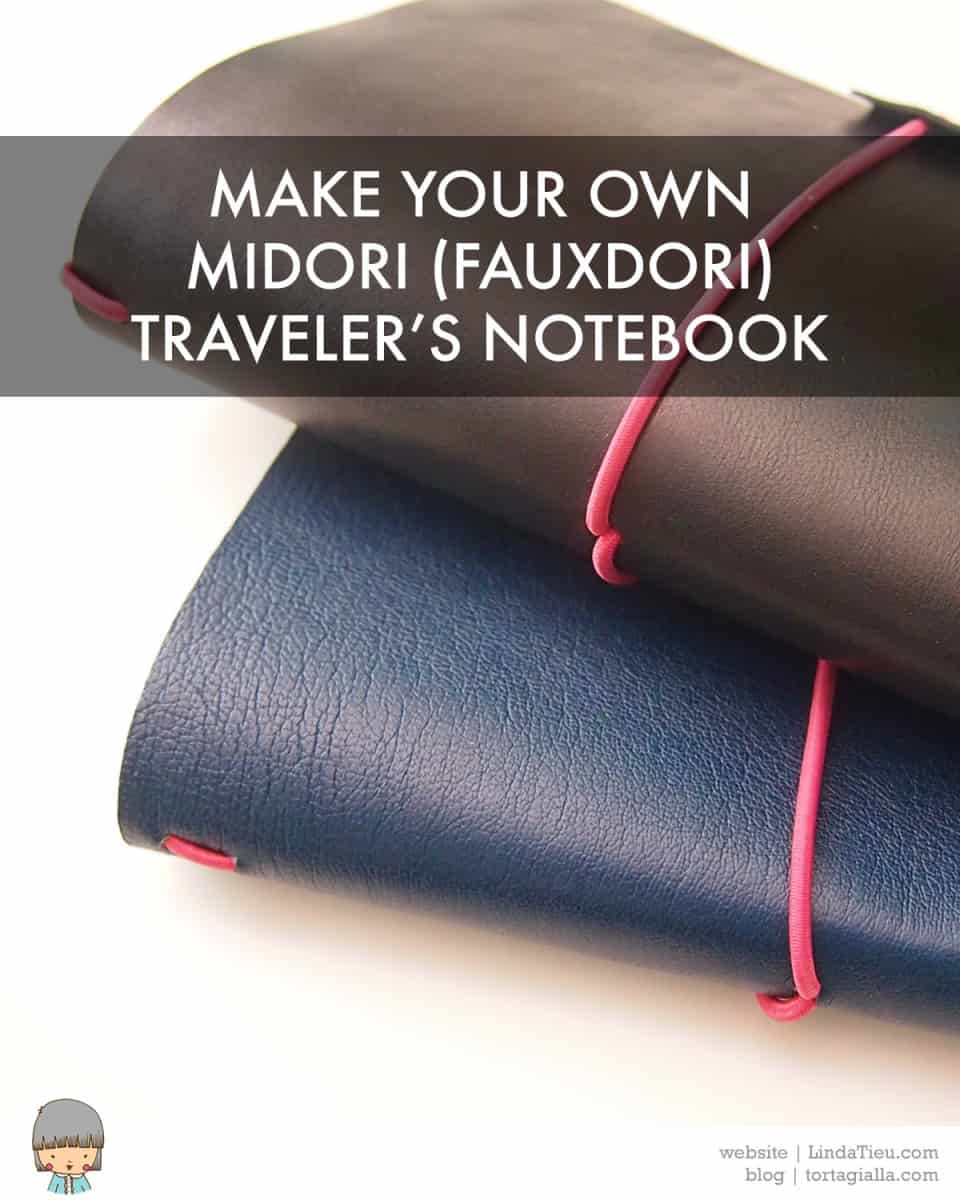
I’ve been looking into paper planners recently and kept seeing the mention of Midori journals and notebook inserts. Although it’s been around for a long time, I never actually understood what it was. The Midori Traveler’s Notebook is basically a leather cover with elastic bands inside that enable you to slip in and out saddle stitched inserts. This means that you can use the same journal cover over and over, just swapping out your notebook insert inside.
Of course, the original brand name is Japanese and not the cheapest on the block. People have copied the idea and often go DIY, calling them fauxdori. Although the Midori was originally intended for travelers who would swap out inserts for every trip, nowadays people use the same idea for all kinds of purposes. Everyday sketchbook artists, planner addicts, list makers, diary writers, bullet list journalers – you name it! The system is so flexible, it’s just a great way to keep a perpetual journal for any topic or hobby.
I decided to jump on the bandwagon and try my hand at making a Midori (fauxdori) Notebook. There are lots of tutorials out there and definitely some variation in regards to sizes and how the elastic band is bound into the cover. But ultimately, all you need is durable material for your cover, the elastic band material and some basic bookbinding tools. All the other details are sort of up to your preference.
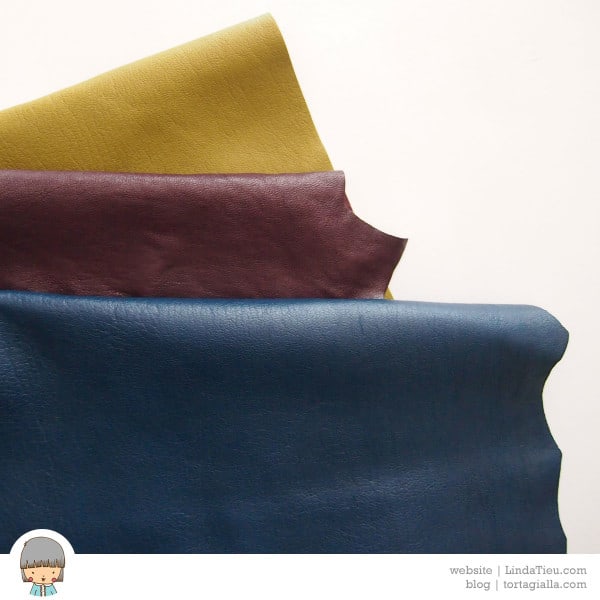
After rummaging in my stash, I decided to use the dark blue leather for my first fauxdori notebook. Unfortunately, the leather is not a very thick and quite floppy. I know that not everyone has access to leather, but you can definitely consider any kind of material that will hold up to be a cover. Whenever I want to strength my cover material, I just cut a piece of cardstock to size and glue it to my leather. Besides adding strength, it’s a nice way to add a pop of color and design to the inside of your journals.
Since I live in Italy and we use A4 paper, I decided to size my notebook accordingly. You can see a bunch of note system page sizes here and decide what you want to go with. Depending how thick and expansive you want the notebook to be, you’ll have to calculate enough width for the spine area. I would have preferred to make mine wider, but I’m limited by the size of the patterned paper that is 30 centimeters wide.
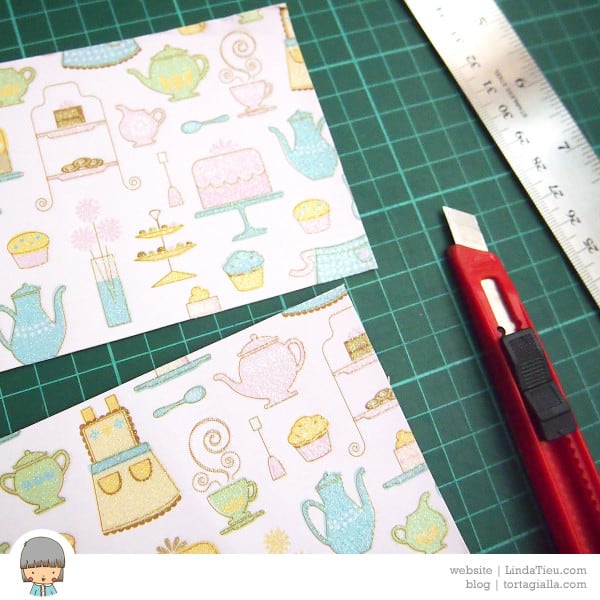
I cut my paper to size first, then glued it to my leather with standard white glue. After everything dried completely, I trimmed my leather to size and made some measurements to punch the holes for the elastic band. I ended up purchasing some colored elastic that you usually see with these types of notebooks – but I didn’t realize 3mm is actually really thick. I think it’s too big because I had to punch really large holes to get it to fit through.

I punched a hole in the middle of the spine for the wrap around part of the elastic. You might have seen that some journals have the closure cord separate and knotted on the back, but I don’t like the idea of having a bump under the writing area of the notebook pages. Now comes the part that tripped me up a bit in the process. I realized that the cover has to be much larger than your notebook insert size from top and bottom, because you have to punch holes for the elastic and the notebook has to slip in. How close did I really want to punch these holes to the edge of the cover? Especially since my cord is so thick, I was risking weakening the whole cover structure and possible tearing through use.
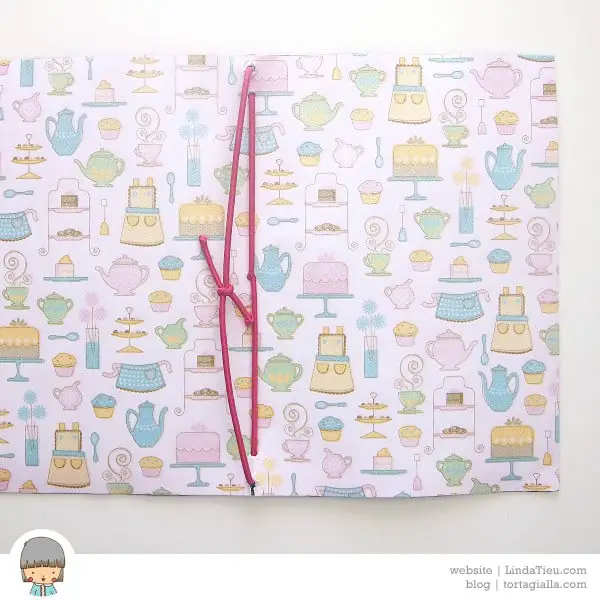
In fact, with all the wrangling I ripped the paper lining at the bottom of the cover as shown in the picture above. Below you can see a view of the finished cover from the outside.
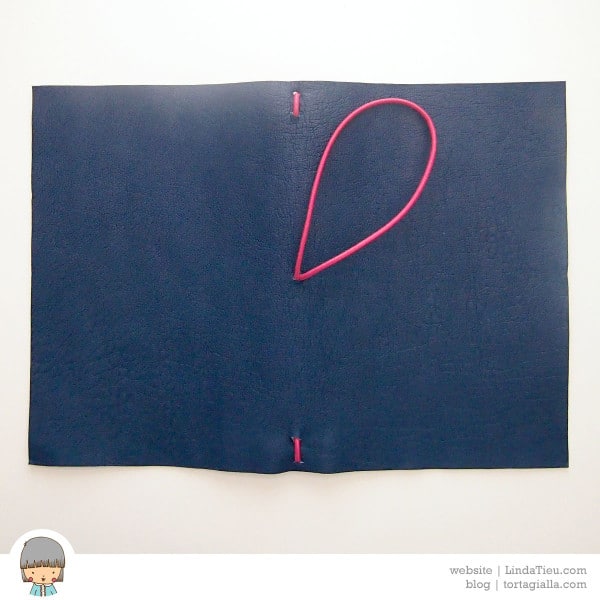
In the end, it wasn’t a total loss, because I just had to cut my notebook insert paper down a 1cm to fit into the cover. I suppose it’s not too shabby for my first try.
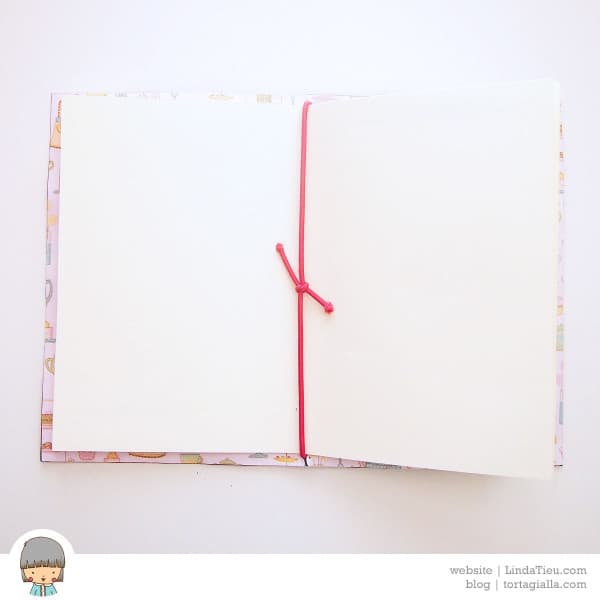
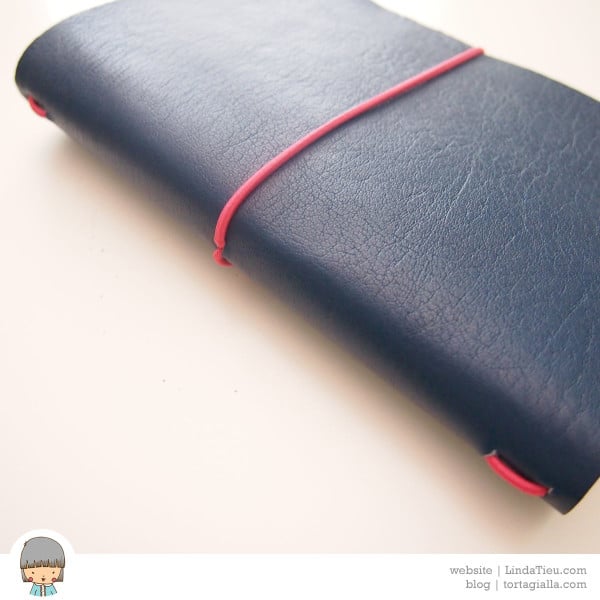
Of course, from the hands-on experience I immediately wanted to make another fauxdori with a few improvements. Instead of punching holes in the cover to string the elastic through – reducing the size of the insert that can slip in, I wanted to try wrapping the elastic over the top and bottom of the cover. Of course, it depends on you having a strong enough cover material to withstand that pressure, so this second attempt uses a heavier weight black leather.
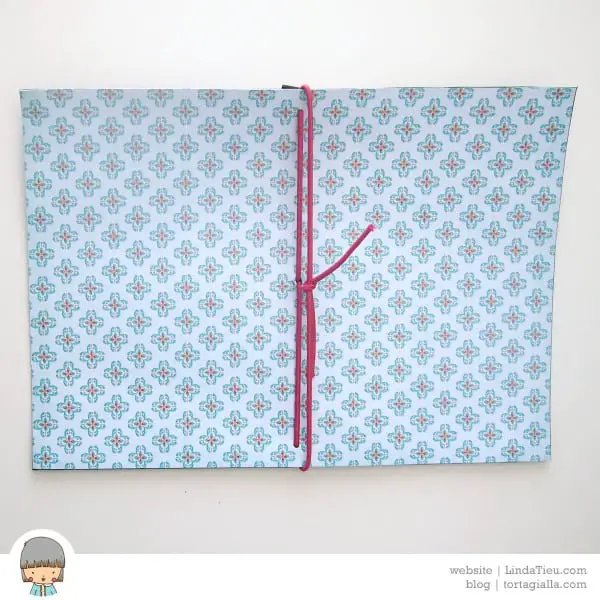
I also added a little strip of leather with the wrap around part of the elastic, so the pressure wouldn’t rough up the notebook papers on contact, when closing it up.
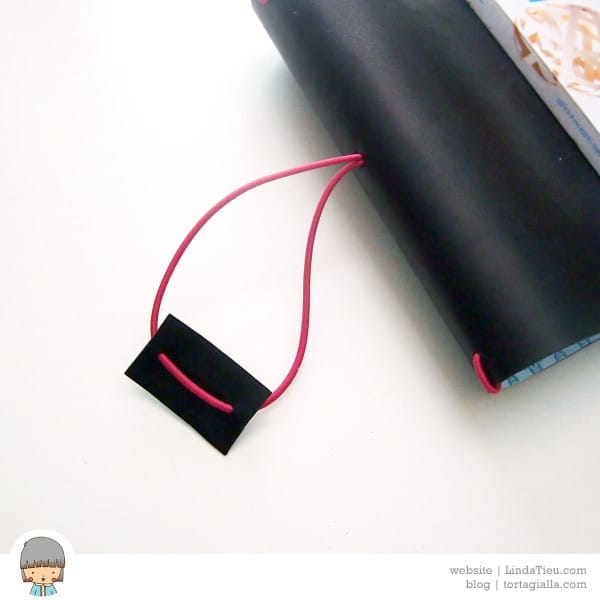
Obviously, all this has to be tested with tried and true usage, to see what really happens. I ended up with two fauxdori covers to test out… perhaps will carry it around in my purse to see how the wear and tear goes.
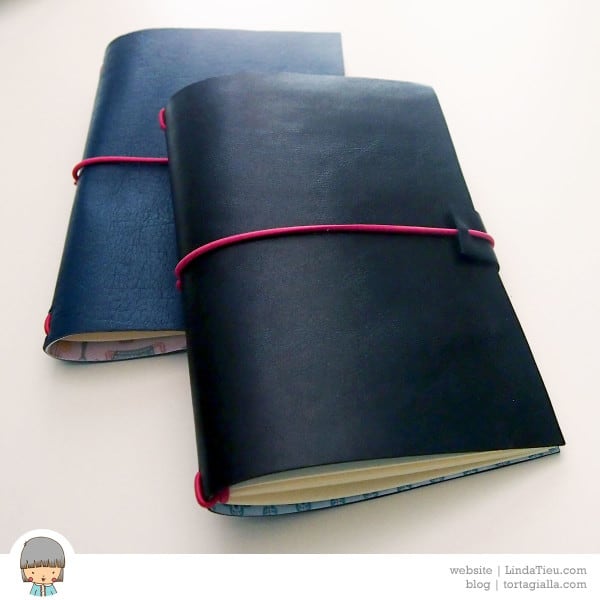
Coming from a bookbinding perspective, I know there are lots of variations possible in terms of where to punch the holes and how many strands of elastic to include, depending how expansive you want your notebook to be. I’m thinking of horizontal row of holes and needing more width for the cover in general. Or maybe even using slits instead of holes.
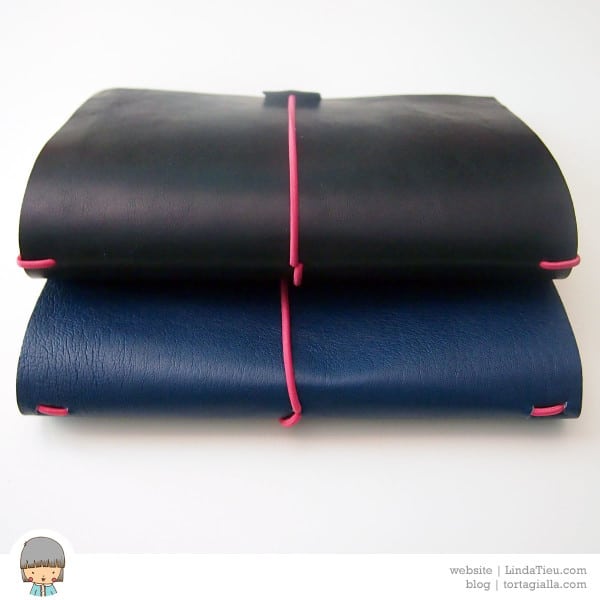
Lots to consider and think about… not to mention real-world testing.
Well, since I have a whole lot of material available, I will be making more of these to try out some variations in construction and sizes for different purposes. I’m thinking that personally I would definitely use this system for notebooks in my purse, because it’s usually quick notes and things I jot down, not necessarily to be kept forever. It seems the kind of usage that makes sense for something that can be perpetually swapped out.
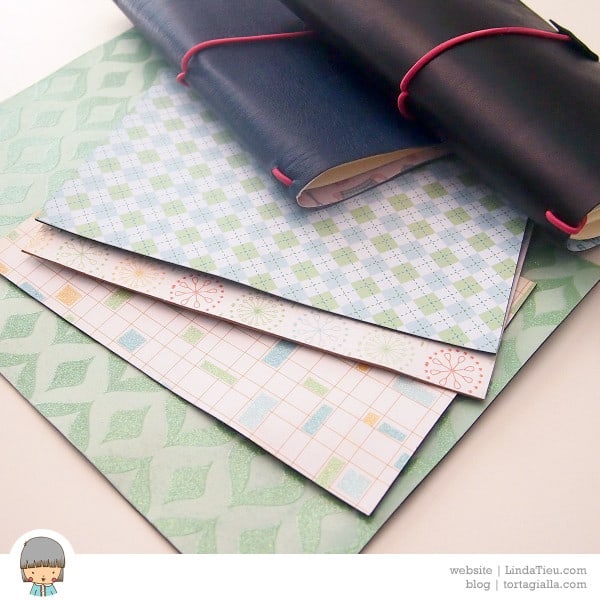
Have you tried to make a fauxdori? Did you run into any issues or would you opt for traditionally binding a journal?



